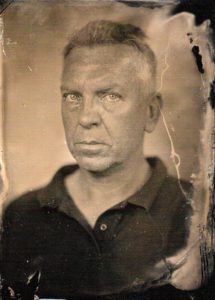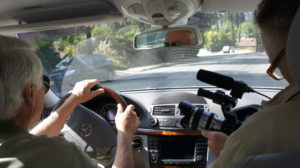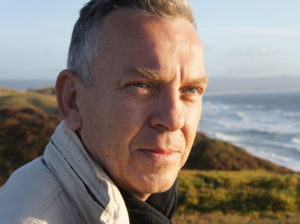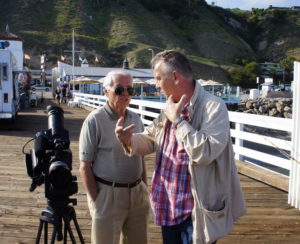2016 AIFF interviews with the filmmakers
Director-producer Predrag Bambic’s work is up for another accolade, this time for the coveted Arpa International Film Festival’s 2016 Best Documentary Award. Being a seasoned cinematographer in film and television, it is only natural that Bambic would produce Albert’s Way, a feature-length documentary film about the legendary designer of Panavision Panaflex, Albert Mayer.
Who is Albert Mayer?
Mayer was born in Perlez, Benat, Serbia. At the age of nine, when WWII was devastating Europe, Mayer was thrown into a concentration camp where he struggled to survive. Fast forward to when Mayer was a young man and the Berlin wall was being erected—at that moment he decided to choose where he was going to live. So he got married, and with his wife moved to the USA. Now this is when the engineer’s career took off.
Albert’s Way is a documentary about the life and tremendous achievements of Albert Mayer. A gifted engineer who made his mark designing the Panavision Panaflex and many more generations of cameras that won him many Oscars and Emmys.
Who is Predrag Bambic?
 Director, producer and cinematographer, Bambic is Serbian, born in Belgrave, Yugoslavia. He has worked at TV Belgrade; Reuters TV; CNN International; was nominated for the Rory Peck Trust “Hard News Award” for his work with CNN; has authored many well-known pictures of the wars in the Balkans; and was director of photography, producer and director on numerous films. Bambic studied at the University of Arts in Belgrade in the Film and TV Camera department of the Faculty of Drama Arts, earning his Master of Arts degree.
Director, producer and cinematographer, Bambic is Serbian, born in Belgrave, Yugoslavia. He has worked at TV Belgrade; Reuters TV; CNN International; was nominated for the Rory Peck Trust “Hard News Award” for his work with CNN; has authored many well-known pictures of the wars in the Balkans; and was director of photography, producer and director on numerous films. Bambic studied at the University of Arts in Belgrade in the Film and TV Camera department of the Faculty of Drama Arts, earning his Master of Arts degree.
Paying homage to his passion, photography, this a portrait of Bambic (shown left) using the 19th century collodion process technique. I wonder how long he had to remain still for this photo?
The 19 Annual Arpa International Film Festival will screen Albert’s Way on November 5 at 2:15pm in the Spielberg Theatre. As a part of a series of interviews with 2016 AIFF category nominees, Bambic answered the following questions regarding his film.
Why did you choose to make your film?
I was always interested in events that historians are not comfortable to write about. These stories sometimes stay hidden in oblivion but often contain important messages. Being that I come from the country that was torn by the wars, I had a first-hand opportunity to see that the price for the “big” ideas is often paid by the innocent “ordinary” people whose lives become shattered.
Another subject that interests me is about migrations of the people, sometimes fleeing from war and violence, and sometimes just in search of the better life. When I first met Mr. Albert Mayer, I saw the chance to tell the story about wars, “big” ideas, their effects on “small” people and how it can sometimes give good results.

Name a moment during shooting that made you proud.
One, when I managed to convince Mr. Mayer to accept the idea to tell his story about his traumatized and oppression-filled childhood. Two, when I reconnected him with his childhood friends.
Was there an “Aha moment” while making your film?
When I started with the historical background research, I had a solid idea of the  story I wanted to tell. When I started to shoot it, I realized that some of the eyewitnesses of the events were still among us. Listening to their testimonies, I realized that all the stories about these historic events were getting lost in the haze of just being the story, and so they became the statement for recent events that we can use to learn a lesson. Skepticism had started to replace facts. History had started to take concrete form.
story I wanted to tell. When I started to shoot it, I realized that some of the eyewitnesses of the events were still among us. Listening to their testimonies, I realized that all the stories about these historic events were getting lost in the haze of just being the story, and so they became the statement for recent events that we can use to learn a lesson. Skepticism had started to replace facts. History had started to take concrete form.
Was there a bizarre moment that happened while making your film?
The most bizarre moment was when I realized that the post-WWII concentration camps and mass re-lodgements of entire populations were not anything unique at that time, as it happened in Poland, Czechoslovakia, Romania, Hungary, Yugoslavia, France, etc. Neither was the result of the retaliation for the Nazi-Germany policy of genocide. Evil, once unleashed, causes more evil. War is about destruction and killing only for some form of the redistribution of wealth.
What is your favorite scene?
My favorite scenes are the triple-parallel editing at the beginning of the film (California, Serbia and Panavision workshop) and at the end of the film on the Malibu Pier.
What is your favorite line?
“The guards were smoking and drinking and they let them run in circles. Then they started shooting at them. They killed one of them, one they shoot through the stomach…” This was a harsh reality to hear.
What does it mean to have your film selected as a category nominee by the Arpa International Film Festival?
It is both an honor and a pleasure to have an opportunity to share Albert’s Way with such a great audience at the Arpa International Film Festival.
Albert’s Way (2015) | 59 min. | Documentary | Serbia
Be sure to check out the Albert’s Way trailer and get tickets!
 Written by Sharon Swainson
Written by Sharon Swainson
Communications & Development Director
2016 Arpa International Film Festival



